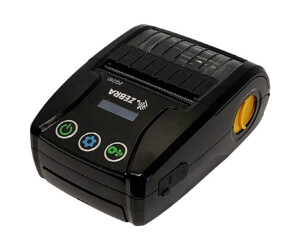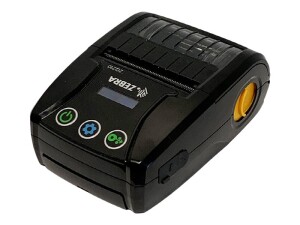- /
- Computersystems
- /
- Printers & Copiers
- /
- Receipt Printer
Receipt Printer
Receipt Printer
Receipt printers are specially designed devices used to output receipts, invoices, and other documents typically required in retail, hospitality, and other industries to complete and document transactions. These printers are designed to be small and compact to fit in tight spaces while also providing fast and efficient output of receipts and invoices.
A receipt printer can be either a thermal printer or a dot-matrix printer. A thermal printer uses a chemical reaction to produce the image on the paper, while a dot-matrix printer prints the image onto the paper using a set of pins. Thermal printers have the advantage of being faster and quieter and do not require ink or toner. However, the prints are often light-sensitive and may fade or smudge when exposed to direct sunlight or heat. Dot-matrix printers are generally more durable and provide better print quality but are slower and louder than thermal printers and require ink or toner.
Receipt printers can be connected to other devices and systems through various interfaces such as USB, serial and parallel ports, and Ethernet or Wi-Fi. Many receipt printers also offer the ability to wirelessly connect to mobile devices such as smartphones and tablets to provide greater flexibility and convenience.
It is important to ensure that the chosen receipt printer is compatible with the existing networks and systems to ensure smooth integration and seamless functionality. Good user-friendliness can help increase productivity and reduce the frustration often associated with complex or difficult-to-use devices. Therefore, it is advisable to choose a device that is easy to use and has sufficient security features to ensure the confidentiality of the printed documents.
Print Quality:
High print quality is an important aspect to consider when choosing a receipt printer. A clear and precisely printed receipt is essential to present information in an understandable and professional manner. A receipt printer should be able to print text, graphics, and barcodes in high resolution and quality to ensure that the receipt is easily readable and provides an accurate representation of data and information.
High print resolution and quality are also important to ensure that the receipt provides a clear and distinct representation of images, logos, and other graphics. If the receipt is unclear or blurry, this can lead to confusion and misunderstandings and may affect customer trust in the company.
Another important aspect of print quality is the ability of the receipt printer to print barcodes in high quality. Barcodes are commonly used on receipts to quickly and efficiently read and process information. If the barcode is not printed correctly or is unreadable, this can cause problems with data processing and orders.
Speed:
The speed of a receipt printer is an important aspect to consider when selecting the appropriate device. In many business areas, such as retail, hotel and catering, or logistics, it is crucial that receipts can be printed quickly and reliably to accelerate workflows and minimize wait times for customers and employees.
A fast printing process can also help transactions to be completed quickly, and increase the company's productivity. Printing speed may vary depending on the printer model and type, and it is important to choose a device that meets the application's requirements. For example, some receipt printers can print up to 350 mm per second, while other models have a slower speed.
Reliability:
The reliability of the receipt printer is another important aspect to consider when selecting the appropriate device. It is important that the receipt printer is always ready for use and can print reliably to avoid delays in workflows. A reliable printer ensures that employees and customers can be served quickly and efficiently, which improves productivity and customer service. Therefore, receipt printers should be of high quality and reliability to meet the business operation's requirements. It is advisable to read customer reviews and tests before purchasing a receipt printer to ensure that the chosen device is reliable and robust, and also provides fast and efficient support if needed.
Connectivity:
Connectivity is an important aspect when selecting a receipt printer. It is important that the printer has various interfaces such as Ethernet, USB, and WLAN to ensure smooth integration into existing systems. The ability to connect the printer wirelessly to other devices can increase flexibility and efficiency and simplify the printing process. Compatibility with various operating systems, especially with common POS systems, is also an important factor in choosing a receipt printer. Simple and reliable connectivity can help improve workflows and increase productivity.
Compatibility:
Compatibility is an important factor in choosing a receipt printer as it should be compatible with various operating systems and applications. Therefore, it is advisable to check compatibility in advance to ensure that the receipt printer can be seamlessly integrated into the existing system. It is also important to ensure that the receipt printer has the correct drivers to ensure proper communication with the operating system. Good compatibility can help ensure that the printing process runs smoothly and downtime is avoided.
User-friendliness:
User-friendliness is an important aspect when selecting a receipt printer because simple operation increases productivity and reduces error rates. Most receipt printers are generally easy to use, but there are some features that are particularly user-friendly.
An intuitive control panel is an example of a user-friendly feature. A receipt printer with a simple and clearly structured control panel makes it easy for the user to control and monitor the printing process. The use of symbols instead of text on the control panel can also simplify operation.
Another important feature for user-friendliness is the presence of automatic functions such as automatic paper feed and automatic paper cutting. This reduces the manual intervention of the user and thereby increases efficiency and ease of use.
Finally, the availability of manuals, guides, and videos can also increase user-friendliness. A detailed guide or tutorial video can help the user operate the receipt printer quickly and effectively.
Cost-effectiveness:
Cost-effectiveness is another important aspect when selecting a receipt printer. Both the purchase cost and operating costs should be considered. While a high-quality receipt printer may initially be more expensive, it can prove to be more cost-effective in the long run as it causes fewer downtimes and lower maintenance costs. Additionally, the costs of consumables such as ink cartridges and thermal paper should also be considered.
It is important to consider the operating costs of the receipt printer in advance to avoid unexpected costs. It is also advisable to compare different models to ensure that the selected receipt printer meets the needs of the business. In some cases, it may be worthwhile to invest in a high-quality model to save costs in the long run. A cost-effective receipt printer can also have a positive impact on the profitability of the company.
Paper management:
Paper management is an important aspect when selecting a receipt printer. A good receipt printer should be able to handle various paper formats and sizes, including standard formats such as A4, A5, envelopes, receipts, and invoices. In addition, receipt printers should be able to handle different paper types, such as coated paper, uncoated paper, or recycled paper.
Another important aspect of paper management is the ability of the receipt printer to handle labels and receipts with different adhesives. Receipt printers that can print labels can be useful in many applications, such as in the production of product labels or for labeling shipping boxes.
In addition, paper management can also affect a receipt printer's ability to print receipts in large quantities. Some models can automatically feed paper rolls or stacks of receipts, saving time and increasing efficiency.
Robustness:
Robustness is another important aspect when selecting a receipt printer. The printer must be able to operate in a busy environment and withstand drops and vibrations. There are receipt printers specifically designed for use in harsh environments, such as restaurants or warehouses, that can handle rough handling and exposure to moisture and dirt.
Safety:
Safety is an important aspect to consider when choosing a receipt printer, as receipts often contain sensitive information such as customer addresses, payment information, and order details. A good receipt printer should therefore offer security features such as password protection, data encryption, and access control to ensure that only authorized individuals can access the data.
In addition, receipt printers should be able to establish and monitor secure network connections to ensure that no unauthorized access takes place. Some receipt printers also offer the ability to create backups on external storage devices to be able to respond quickly in case of data loss or manipulation. A combination of hardware and software security features can help keep sensitive data safe and protected.
Environmental friendliness:
Environmental friendliness is an important aspect to consider when choosing a receipt printer. The printer should be energy-efficient and minimize energy consumption to reduce environmental impact. Some models also offer features such as double-sided printing to reduce paper consumption, as well as recycling options for toner cartridges and paper.
Furthermore, there are also more environmentally friendly options such as receipt printers made with more environmentally friendly materials or those produced with a lower CO2 footprint. It is important to note that the most environmentally friendly options may be slightly more expensive than conventional models, but in the long run, they can prove to be cost-effective and contribute to reducing environmental impact.
Support and service:
Support and service are important aspects to consider when choosing a receipt printer. A manufacturer with a good reputation for customer support and warranty coverage can give you the confidence that you will receive support when you need it. This can be done through telephone support, online chat, or email communication.
It is also important to check if the manufacturer offers service options such as preventative maintenance or repair services. Some manufacturers also offer training and resources to ensure that users can fully utilize the capabilities of the receipt printer.
Advantages of a receipt printer:
- Clearer and more precise display of information through high-quality printing
- Fast printing speeds that can speed up workflow
- Reliability to minimize downtime and delays
- Connectivity and compatibility for seamless integration into existing systems and applications
- User-friendly and maintenance-friendly design
- Cost-effectiveness through long-term savings in maintenance and downtime costs
- Paper management for processing various paper formats and sizes
- Robustness for use in busy environments
- Security features such as password protection and encryption to protect confidential information
- Environmentally friendly options such as energy-efficient operation and recycling options
- Good customer support and warranty coverage for smooth operation and quick problem resolution
Disadvantages of a receipt printer:
- Acquisition costs may be higher than for a conventional printer
- Limitations on paper selection, as receipt printers require specific paper formats and sizes
- Possible limited functionality compared to a conventional printer, as receipt printers are specialized for printing receipts and labels
- Maintenance and replacement of wear parts can incur additional costs
- In some cases, the noise level of the printing process can be disruptive.
Conclusion:
In summary, when choosing a receipt printer, a careful analysis of the company's requirements and needs should be conducted. Print quality and paper management are important factors that influence the versatility, efficiency, and adaptability of the printer. However, it should be noted that the speed of the printer is not always the only factor that influences overall productivity. Other aspects of the printing process, such as changing the paper roll or replacing ink cartridges, should also be considered. Overall, receipt printers offer a practical and cost-effective way to increase the efficiency of business processes and improve the documentation of transactions. Choosing the right device with the required print quality, compatibility, and user-friendliness can help ensure that receipts and invoices are printed quickly and reliably, ensuring the smooth flow of business processes.








